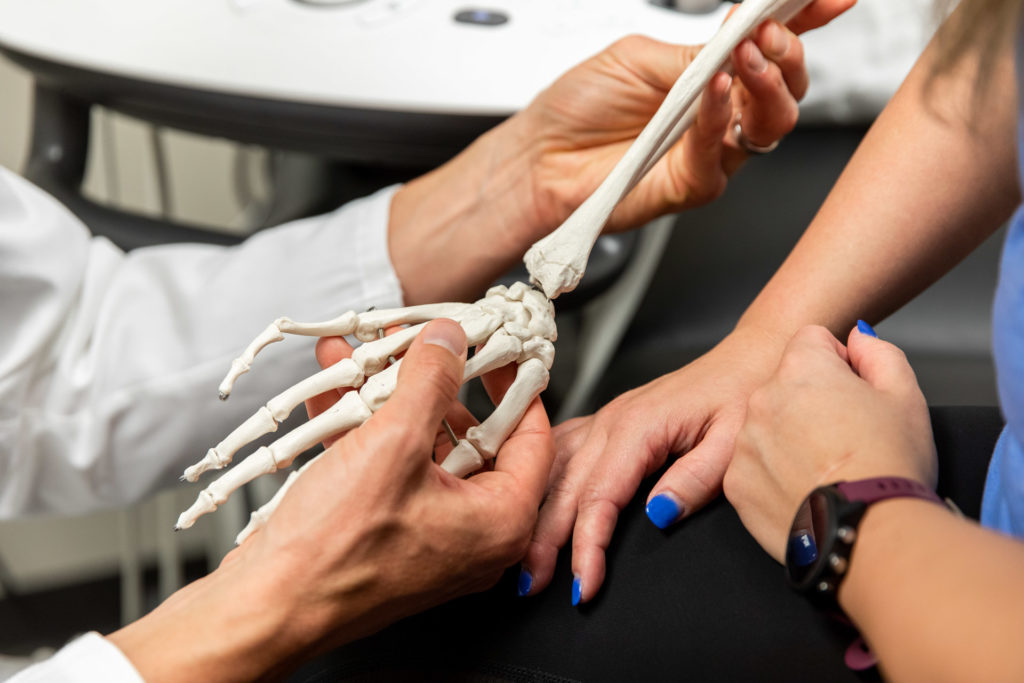
Carpal Tunnel Surgery Overview
What is the surgery for carpal tunnel syndrome?
The surgery for carpal tunnel syndrome is called carpal tunnel release. The procedure involves a cutting of the transverse carpal ligament that runs across the base of the palm. Release of this ligament relieves the compression on the median nerve. The ligament itself plays little role in hand function.
There are three main techniques by which a carpal tunnel release is performed. The original technique involved a long incision from mid-palm down into the forearm. Most hand surgeons have abandoned this type of incision, as it tends to cause a longer recovery time. The other type of open technique is termed “mini-open,” as the incision is much smaller and only in the palm. This is the procedure that I perform. The incision is typically less than one inch and is closed with nylon sutures. A small dressing, no more than a glorified Band-Aid, is used to cover the incision. I do not use a brace or larger dressing, as studies have shown that the hand recovers more quickly if it is not immobilized.
The other technique is called “endoscopic” carpal tunnel release and involves the use of a camera to visualize the ligament so that it can be released from the underside. The purported advantage of this procedure is that recovery time might not be as lengthy. However, several studies have shown that by six to eight weeks, there are no significant differences between the open and endoscopic groups. I generally avoid endoscopic techniques because studies have shown an increased rate of incomplete release of the ligament that leads to persistent symptoms and additional surgery.
The primary complications of carpal tunnel release surgery are infection, persistent pain around the incision (pillar pain), and nerve injury. Pillar pain occurs in 5% of patients at one year following surgery. This tends to occur more frequently in young patients who have heavy-labor occupations. Fortunately, the rate of infection and nerve injury is very low. There are other less common complications that have also been reported.
What type of anesthesia is used for the surgery?
I generally use a combination of a sedative medication placed through an IV, along with local numbing medicine in the area of the incision. There has been recent interest in “wide-awake” anesthesia for carpal tunnel release, performed with numbing medicine only. Several advantages of this type of anesthesia include the fact that the patient can eat and drink on the day of surgery, there is no anesthesia charge, and patients can drive themselves home on the day of surgery.
« Carpal Tunnel Syndrome Diagnosis & Treatment | After Carpal Tunnel Surgery »


